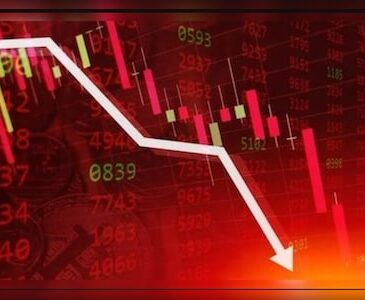The S&P 500 Just Did Something It Has Only Done 9 Times Before. A Big Move in the Stock Market Could Come Next.

The S&P 500 (^GSPC 0.08%) shook off recession fears to climb 24% in 2023, but the gains came in fits and spurts. The index advanced 20% through the first seven months, its momentum fueled by robust economic growth, cooling inflation, and excitement about artificial intelligence.
Then the S&P 500 hit turbulence in the second half. It fell for three consecutive months in August, September, and October as bond yields soared, inflation reaccelerated, and the Federal Reserve signaled a prolonged period of elevated interest rates. But those headwinds faded during the holiday season, and the index finished the year with a final crescendo.
The S&P 500 notched nine consecutive weekly increases at the end of 2023, its longest win streak since 2004. The index has only moved higher in nine straight weeks nine other times in history, and those events typically preceded more gains over the next year.
History says the stock market will head higher in 2024
The modern S&P 500 was introduced in March 1957. Since then the index has racked up a grand total of 10 nine-week wins streaks, the most recent ending in December 2023. The chart below lists the end dates of the previous nine-week win streaks, and shows the S&P 500 return 12 months later.
|
Nine-Week Win Streak End Date |
S&P 500 Return (12 Months Later) |
|---|---|
|
May 1957 |
(8%) |
|
October 1958 |
11.4% |
|
February 1961 |
12.2% |
|
May 1963 |
14.9% |
|
September 1963 |
14.4% |
|
January 1964 |
12.6% |
|
November 1985 |
23.3% |
|
September 1989 |
(8.8%) |
|
January 2004 |
1.9% |
|
Median |
12.2% |
Data source: YCharts.
As shown above, the S&P 500 returned a median of 12.2% during the 12-month period following past nine-week win streaks. In other words, history says the S&P 500 could increase about 12.2% by the end of 2024, which implies a fair amount of upside across the U.S. stock market.
There is a big asterisk next to that last statement, though. Investors should never place undue reliance on historical data. Past performance is never a guarantee of future results, because each situation is unique. For instance, the most recent nine-week win streak was driven by investors reading the economic tea leaves to guess at future monetary policy. The market believes the Federal Reserve will pivot toward rate cuts in 2024, but that may or may not be true.
The unique economic circumstances surrounding the most recent nine-week win streak mean the S&P 500 may not perform as expected this year. That said, investors have another reason to believe the stock market could move higher in 2024.
Wall Street says strong earnings will send the stock market higher in 2024
S&P 500 companies reported three consecutive declines in quarterly profits beginning in the fourth quarter of 2022. That so-called earnings recession (defined as two or more consecutive declines) ended in the third quarter of 2023, and Wall Street expects stronger financial results this year.
To elaborate, S&P 500 companies are projected to report revenue growth of 2.3% and earnings growth of 0.8% in 2023. But the Wall Street consensus calls for revenue growth to accelerate to 5.5% and earnings growth to accelerate to 11.8% in 2024. That momentum could certainly drive the index higher this year. Indeed, the S&P 500 bears a 12-month price target of 5,153, according to FactSet Research. That implies 9% upside from its current level.
For context, that bottom-up estimate blends the median price target on every stock in the index, aggregating more than 11,300 individual ratings. Even so, investors should remember that forecasts are subject to uncertainty. There is no guarantee the S&P 500 will produce a positive return over the next 12 months. However, the odds of a positive return increase as the holding period lengthens.
Patience is the secret to making money in the stock market
The chart below illustrates the relationship between holding period and the probability of a positive return in the S&P 500.
|
Holding Period |
Odds of a Positive Return in the S&P 500 |
|---|---|
|
1 Year |
77% |
|
3 Years |
87% |
|
5 Years |
93% |
|
10 Years |
97% |
|
20 Years |
100% |
Data source: First Trust Advisors, Crestmont Research.
As shown above, the S&P 500 produced a positive return during every rolling 20-year period in history. That means any investor that bought an S&P 500 index fund definitely made money, provided they held the index fund for at least 20 years.
Moreover, the S&P 500 soared 1,700% over the last three decades, compounding at 10.11% annually. Investors have no reason to expect a different outcome over the next three decades. Patience is the secret to making money in the stock market.
Trevor Jennewine has no position in any of the stocks mentioned. The Motley Fool has no position in any of the stocks mentioned. The Motley Fool has a disclosure policy.




